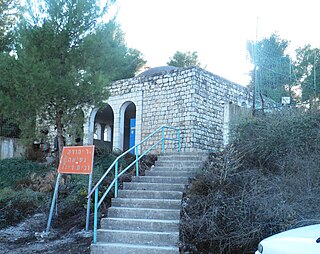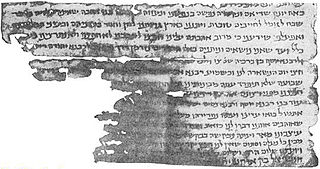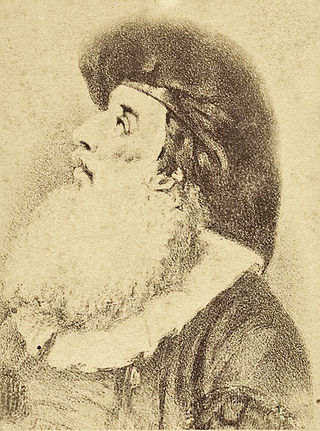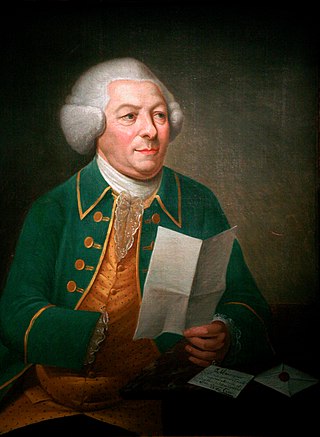Related Research Articles

Judah II or Nesi'ah I was a Jewish sage who lived in Tiberias in the Land of Israel, in the middle of the third century CE.
Judah ben Samuel of Regensburg, also called Yehuda HeHasid or 'Judah the Pious' in Hebrew, was a leader of the Chassidei Ashkenaz, a movement of Jewish mysticism in Germany considered different from the 18th-century Hasidic movement founded by the Baal Shem Tov.
Isaac ben Moses of Vienna, also called Isaac Or Zarua or the Riaz, is considered to be one of the prominent rabbis of the Middle Ages. He was probably born in Bohemia and lived between 1200 and 1270. He attained his fame in Vienna and his major work, the halachic guide known as the Or Zarua a compilation of halachic decisions and legal rulings, was very popular among Ashkenazic Jewry. He was a member of the Ashkenazi Hasidim and studied under many scholars, including Eliezer ben Joel HaLevi, Judah ben Samuel of Regensburg, Samson of Coucy and Eleazar of Worms. He was among the teachers of Meir of Rothenburg.
Moshe haDarshan was chief of the yeshiva of Narbonne, and perhaps the founder of Jewish exegetical studies in France. Along with Rashi, his writings are often cited as the first extant writings in Zarphatic, the Judæo-French language.
Rabbi Isaac ben Jacob or Yitzhak ben Yaakov, nicknamed "ha-Lavan" or "the white" was a 12th-century rabbi of Bohemia. He was a Tosafist and liturgical poet who flourished at Prague in the late 12th century.
Moses ben Hanoch or Moses ben Enoch was a medieval rabbi who inadvertently became the preeminent Talmudic scholar of Spain. He died about 965.
Elijah bar Aaron Judah Baal Shem was a Polish rabbi and kabbalist who served as chief rabbi of Chełm. One of the most eminent Talmudists of his generation, he is recorded as the first person known by the epithet "Ba'al Shem" having been considered a great saint and believed to have used miraculous powers to create a golem.

Ḥushiel ben Elḥanan was president of the beth midrash at Kairouan, Tunisia toward the end of the 10th century. He was probably born in Italy, but his origins and travels remain obscure, and his eventual arrival in Kairwan is the subject of a well-known story.
Isaac ben Joseph of Corbeil was a 13th-century French rabbi and tosafist, best known as the author of Sefer Mitzvot Ḳatan.

Jonah ben Abraham Gerondi, also known as Jonah of Girona and Rabbeinu Yonah, was a Catalan rabbi and moralist, cousin of Nahmanides. He is most famous for his ethical work The Gates of Repentance.

Naphtali Cohen (1649–1718), also known as Naphtali HaKohen Katz, was a Russo-German rabbi and kabalist born in Ostrowo in Ukraine. He belonged to a family of rabbis in Ostrowo, where his father, Isaac Cohen, a great-great-grandson of the Judah Loew ben Bezalel, had fled during the Polish–Cossack–Tatar War.

Solomon Joachim Chayim Halberstam known from his acronym as ShaZHaH (שזחה), was an Austrian scholar and author.

Eliakim Carmoly was a French scholar. He was born at Soultz-Haut-Rhin, then in the French department of Haut-Rhin. His real name was Goschel David Behr ; the name Carmoly, borne by his family in the fourteenth and fifteenth centuries, was adopted by him when quite young. He studied Hebrew and Talmud at Colmar; and, because both French and German were spoken in his native town, he became proficient in those languages.
Eliezer ben Samuel of Verona was an Italian Jewish tosafist.

Herz Cerfbeer of Medelsheim was a French Jewish philanthropist. He was a contractor to the army, and employed his wealth and his influence with the French government in promoting the material and spiritual welfare of his coreligionists. The government permitted him to settle at Strasburg, in opposition to the wishes of the authorities of that city, who zealously enforced the law excluding Jews.

The history of the Jews in Regensburg, Germany reaches back over 1,000 years. The Jews of Regensburg are part of Bavarian Jewry; Regensburg was the capital of the Upper Palatinate and formerly a free city of the German empire. The great age of the Jewish community in this city is indicated by the tradition that a Jewish colony existed there before the common era; it is undoubtedly the oldest Jewish settlement in Bavaria of which any records exist.
Meir ben Samuel, also known by the Hebrew acronym RaM for Rabbi Meir, was a French rabbi and tosafist, who was born in about 1060 in Ramerupt, and died after 1135. His father was an eminent scholar. Meir received his education in the Talmudical schools of Lorraine, his principal teachers being Isaac ben Asher ha-Levi and Eleazar ben Isaac of Mainz, with whom he later carried on a correspondence.
Baruch ben Samuel, also called Baruch of Mainz to distinguish him from Baruch ben Isaac, was a Talmudist and prolific payyeṭan, who flourished in Mainz at the beginning of the thirteenth century.
Eliezer of Touques was a French tosafist, who lived at Touques in the second half of the thirteenth century. He abridged the tosafot of Samson of Sens, Samuel of Évreux, and many others, and added thereto marginal notes of his own, entitled "Gilyon Tosafot," or "Tosafot Gillayon". This abridgment, together with the notes, after undergoing many alterations and receiving several additions from later authorities, was called Tosafot Ṭuk; it forms the foundation of the Tosafot now printed with the Talmud.

Moses Münz, also known as Maharam Mintz was a Hungarian rabbi. He served as chief rabbi of Alt-Ofen (Óbuda) from 1790 until his death.
References
- ↑ Carmoly ("La France Israélite," pp. 138-144, Frankfort-on-the-Main, 1858)
- ↑ Grätz ("Gesch." 3d ed., viii. 12 et seq.)
- ↑
 Singer, Isidore; et al., eds. (1901–1906). "Samuel ben Aaron Schlettstadt". The Jewish Encyclopedia . New York: Funk & Wagnalls.
Singer, Isidore; et al., eds. (1901–1906). "Samuel ben Aaron Schlettstadt". The Jewish Encyclopedia . New York: Funk & Wagnalls. - ↑ (Joseph Loanz, whose narrative was published by Grätz in "Monatsschrift," xxiv. 408 et seq.)
 This article incorporates text from a publication now in the public domain : Singer, Isidore; et al., eds. (1901–1906). "Samuel ben Aaron Schlettstadt". The Jewish Encyclopedia . New York: Funk & Wagnalls.
This article incorporates text from a publication now in the public domain : Singer, Isidore; et al., eds. (1901–1906). "Samuel ben Aaron Schlettstadt". The Jewish Encyclopedia . New York: Funk & Wagnalls.